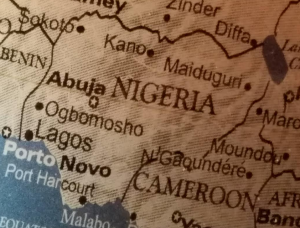By NewsDesk @bactiman63
The World Health Organization (WHO) reports assisting Nigeria health authorities distribute medications to treat Lymphatic filariasis (LF) across 520 Nigerian Local Government Areas (LGAs).

Lymphatic filariasis affects over 120 million people in 73 countries throughout the tropics and sub-tropics of Asia, Africa, the Western Pacific, and parts of the Caribbean and South America.
A wide range of mosquitoes can transmit the parasite, depending on the geographic area. In Africa, the most common vector is Anopheles and in the Americas, it is Culex quinquefasciatus. Aedes and Mansonia can transmit the infection in the Pacific and in Asia.
The painful and profoundly disfiguring visible manifestations of the disease, lymphoedema, elephantiasis and scrotal swelling occur later in life and lead to permanent disability. These patients are not only physically disabled, but suffer mental, social and financial losses contributing to stigma and poverty.
As of 2017, Nigeria accounted for 14.3% of the global population of people that required LF treatment as an estimated total of 128,342,058 people in 583 out of 774 LGAs required preventive chemotherapy for LF. In 2018, 79,831,396 people had been reached with treatment for LF at least once. LF treatment is supposed to be taken once yearly for five years.
According to Dr Suleiman Aliyu, the WHO focal person for NTDs, “WHO has continued to ensure that the gap in geographic coverage for LF comes to zero by 2019. At present, only 33 of the 583 endemic LGAs are yet to start mass drug administration”.
- Rift Valley fever in Mayotte: Vigilance called upon run-up to Eid el Fitr
- Dengue cases near 4,000 in Singapore
- Yersinia outbreak update in Sweden and Denmark
- Measles: 5 new cases reported over the weekend in Saint John
- Group A Streptococcus vaccine search narrowed
- Iran update: Wild poliovirus type 1 (WPV1) from an environmental sewage sample
- Yellow fever outbreak declared in Uganda
- Anthrax outbreak in Guinea linked to sick goat
- Measles outbreak tops 50K cases in Ukraine


